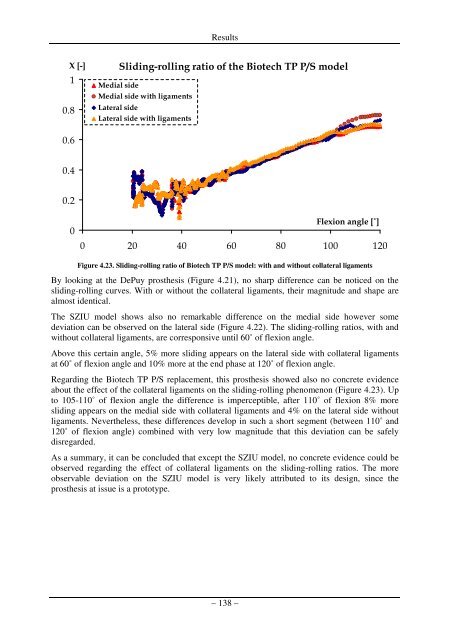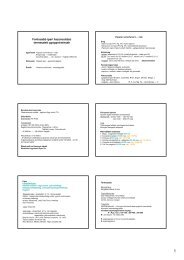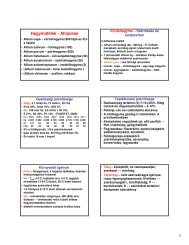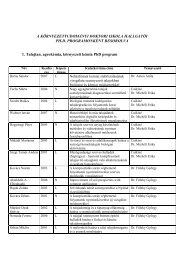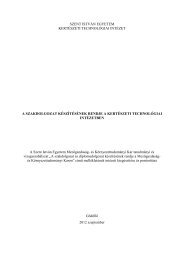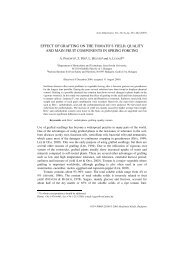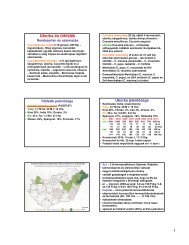PhD Fekete - SZIE version - 2.2 - Szent István Egyetem
PhD Fekete - SZIE version - 2.2 - Szent István Egyetem
PhD Fekete - SZIE version - 2.2 - Szent István Egyetem
Create successful ePaper yourself
Turn your PDF publications into a flip-book with our unique Google optimized e-Paper software.
Results<br />
0.8<br />
Χ [-]<br />
1<br />
Sliding-rolling ratio of the Biotech TP P/S model<br />
Medial side<br />
Medial side with ligaments<br />
Lateral side<br />
Lateral side with ligaments<br />
0.6<br />
0.4<br />
0.2<br />
0<br />
Flexion angle [˚]<br />
0 20 40 60 80 100 120<br />
Figure 4.23. Sliding-rolling ratio of Biotech TP P/S model: with and without collateral ligaments<br />
By looking at the DePuy prosthesis (Figure 4.21), no sharp difference can be noticed on the<br />
sliding-rolling curves. With or without the collateral ligaments, their magnitude and shape are<br />
almost identical.<br />
The SZIU model shows also no remarkable difference on the medial side however some<br />
deviation can be observed on the lateral side (Figure 4.22). The sliding-rolling ratios, with and<br />
without collateral ligaments, are corresponsive until 60˚ of flexion angle.<br />
Above this certain angle, 5% more sliding appears on the lateral side with collateral ligaments<br />
at 60˚ of flexion angle and 10% more at the end phase at 120˚ of flexion angle.<br />
Regarding the Biotech TP P/S replacement, this prosthesis showed also no concrete evidence<br />
about the effect of the collateral ligaments on the sliding-rolling phenomenon (Figure 4.23). Up<br />
to 105-110˚ of flexion angle the difference is imperceptible, after 110˚ of flexion 8% more<br />
sliding appears on the medial side with collateral ligaments and 4% on the lateral side without<br />
ligaments. Nevertheless, these differences develop in such a short segment (between 110˚ and<br />
120˚ of flexion angle) combined with very low magnitude that this deviation can be safely<br />
disregarded.<br />
As a summary, it can be concluded that except the SZIU model, no concrete evidence could be<br />
observed regarding the effect of collateral ligaments on the sliding-rolling ratios. The more<br />
observable deviation on the SZIU model is very likely attributed to its design, since the<br />
prosthesis at issue is a prototype.<br />
– 138 –


